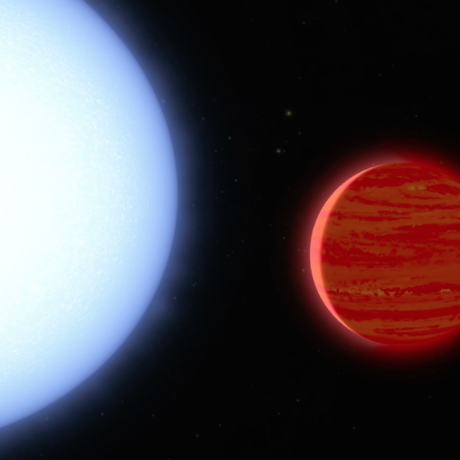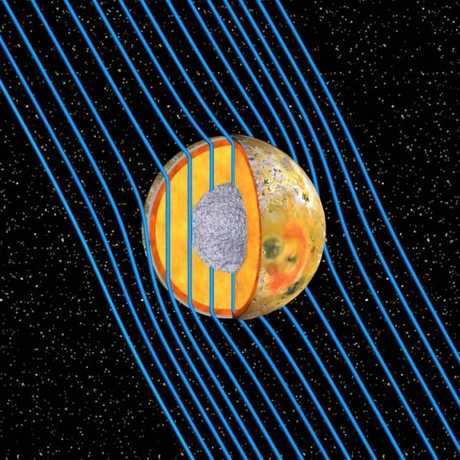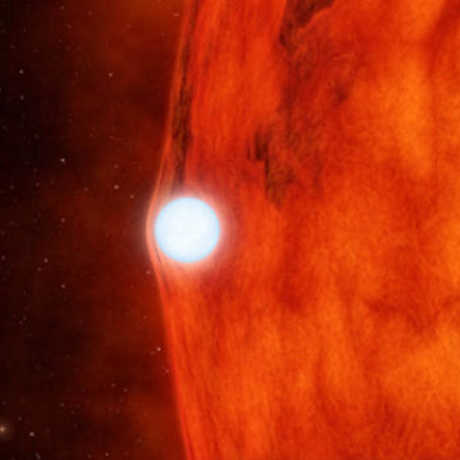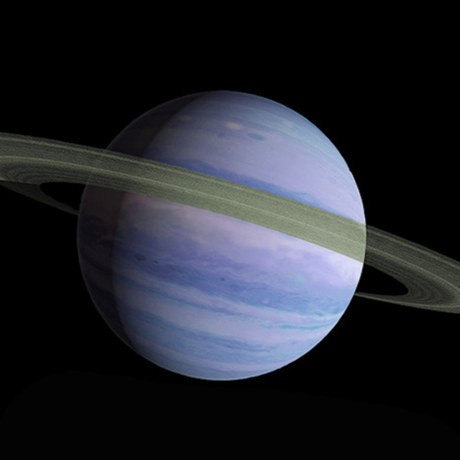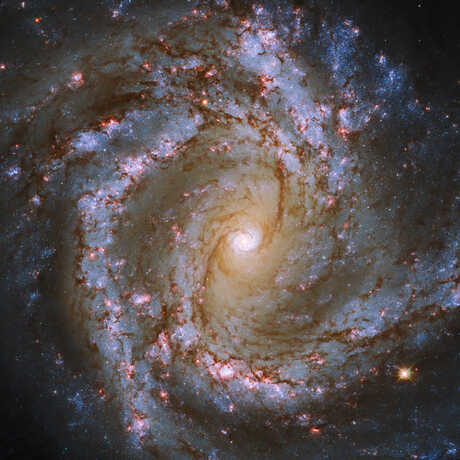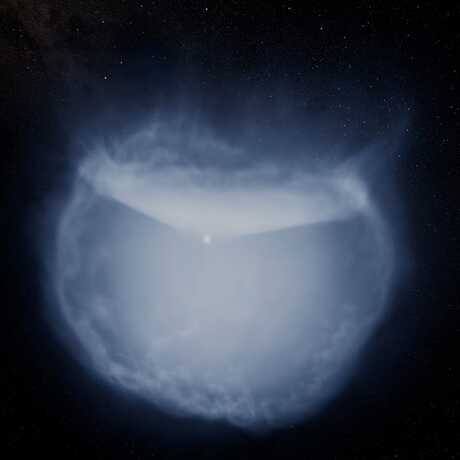Universe Update
Hot Jupiters and Engulfed Planets
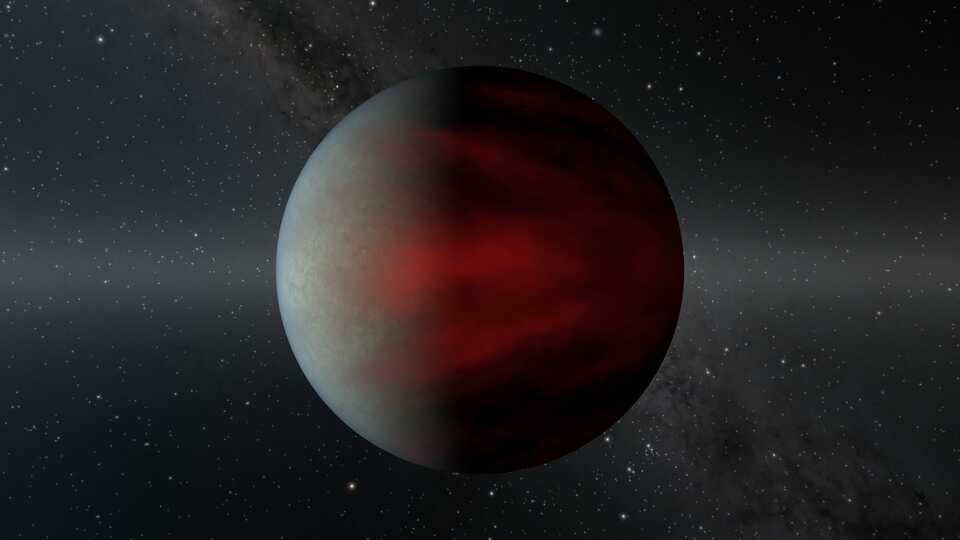
An artist’s rendering of a “hot Jupiter,” a type of gas giant planet that orbits very close to its star.
When a large and diverse gathering of astronomers takes place these days, you can pretty much guarantee that the topic of exoplanets will come up. And with thousands of astronomers gathering (both in-person and virtually) for the 240th meeting of the American Astronomical Society (AAS) this week, it was no surprise that the very first press conference tackled exoplanets as a topic.
Just a few months ago, NASA excitedly announced that we had reached the impressive milestone of having discovered 5,000 exoplanets! And of course, that number continues to creep up. (You can keep track of the current tally here.)
The very first planet discovered around a star other than our sun (well, more precisely, an “ordinary” star, not an exotic stellar remnant) was 51 Pegasi b. The announcement of the discovery took place on October 6, 1995, which was evidently the same date that Jacob Hamer, a graduate student at Johns Hopkins University, was born. Hamer presented his current research at the AAS press conference this morning, and it relates directly to hot Jupiters such as 51 Pegasi b.
51 Pegasi b is completely unlike any planets in our solar system. Whereas we have four small terrestrial planets close to the Sun and four more giant planets relatively far away from the Sun, 51 Pegasi b is even larger than Jupiter, and it revolves around its parent star in merely four days! Mercury, the planet in our solar system that lies closest to the Sun and thus has the shortest orbital period, takes 88 days to complete one orbit.
Prior to this discovery, astronomers expected that giant planets would always be found far from their parent stars and only rocky terrestrial planets would make their homes closer in. Larger, gassier worlds should require cooler environments to form, at the very least, so astronomers suspect that hot Jupiters form farther out, then migrate in.
Another relevant bit of information to understand Hamer’s research is that all the planets in our solar system orbit in the same direction that the Sun rotates. (Specifically, if you flew away from Earth in the direction of the constellation Draco, you could look down on the Solar System and see all the planets orbiting the Sun in a counterclockwise direction—and the Sun itself would appear to rotate counterclockwise.) In this context, we’d say that the planets are aligned with the star’s rotation. This relates to the way the Solar System formed, from a disk of material circling the Sun—everything in the disk was rotating in the same direction, so the resulting planets’ orbits are aligned with the rotation of the Sun.
We know of hundreds of hot Jupiters—many are aligned with their parent stars’ rotation, but many aren’t! A significant fraction of hot Jupiters are misaligned, which makes astronomers wonder why.
Perhaps all hot Jupiters form misaligned and become aligned over time…? Seems reasonable, and there’s a way to test that, which is what Hamer set out to do.
If the hypothesis is correct, one would expect to find misaligned hot Jupiters around young stars and aligned hot Jupiters around older stars. It turns out that stellar ages are challenging to determine, but the Gaia mission has recently provided data on more than a billion stars, and astronomers can use this extensive database to cross-reference the ages of various stars. Including stars with hot Jupiters in orbit around them!
(Coincidentally, Gaia just delivered their third data release today! So a lot of astronomers are working on that new windfall rather than attending AAS sessions. Sometimes you have to choose your battles…)
So what did Hamer find?
Exactly the opposite of what he expected. The data clearly show that misaligned hot Jupiters reside around older stars. As Hamer describes it, aligned hot Jupiters arrive on their orbits early, while misaligned hot Jupiters arrive on their orbits late—after the disk from which they formed has dissipated.
This is an important step in understanding how these (by our standards, strange) planets form.
At the opposite end of a star’s life, planets that may have formed around it face a very different fate—potentially being swallowed (or engulfed) by the star as it grows from the main sequence to a giant or supergiant star.
As it turns out, according to Ricardo Yarza, a graduate student at UC Santa Cruz, “a significant fraction of planetary systems will experience engulfment.” Furthermore, this process of a star swallowing its planets might help explain a few puzzling observations: for example, some giant stars rotate abnormally quickly (perhaps gaining momentum from the planets as they become engulfed), and astronomers also observe planets and brown dwarfs in orbit around white dwarfs (perhaps having their outer layers stripped off by interaction with the relatively massive objects).
Yarza was interested in creating computational simulations of planetary engulfment, but had to overcome a significant challenge. These stars can grow to something like 100 times the Sun’s diameter, while planets might be only 10% the size of the Sun. Instead of simulating the entire system, Yarza performed simulations of a “zoomed in” view of the planets engulfed by the stellar atmospheres. He presented his results at this morning’s press conference.
“As the planet travels inside the star, drag forces transfer energy from the planet to the star,” Yarza explained. His simulations reveal that the planet deposits energy into the star more rapidly and efficiently than expected. A star engulfing a planet can become perhaps ten thousand times brighter—for a few thousand years!
On top of all that, massive brown dwarfs (well, massive compared to planets) can deposit enough energy into the system to eject the outer layers of the star! The brown dwarf can even potentially survive being engulfed, leading to the star becoming a white dwarf orbited by a brown dwarf. (Two dwarfs down, five to go?)
Astronomers shared many more results at today’s AAS meeting—on topics ranging from Venus’s atmosphere to interstellar dust, from magnetic fields to colliding galaxies. We’ll be sharing more stories from the meeting over the next few days, so stay tuned for this week’s astronomy news
